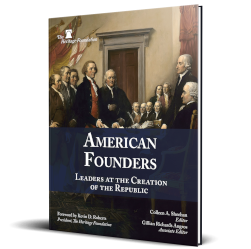The Big Apple will no longer take a bite out of motorists’ pockets. New York City’s $9 congestion toll, a pilot program approved by president Joe Biden in November and put in place in January, is set to be eliminated, so drivers will no longer have to pay to enter Manhattan’s Central Business District below 60th Street.
President Donald Trump, who attacked the toll during his presidential campaign, declared on Truth Social, “CONGESTION PRICING IS DEAD. Manhattan, and all of New York, is SAVED.” The unpopular electronic tolls that were originally set at $15, paused before the election, and then reinstated at a lower rate, should disappear shortly.
Supporters said that the tolls would decrease pollution and congestion, as well as funding the money-losing bus and subway system. But opponents pointed out that they would reduce trips to New York at a time when the city is still trying to recover from the pandemic, while disproportionately hurting poor people and small businesses.
Tolls also punish older and disabled people, who can’t take public transport or afford taxis. Crime has skyrocketed all over New York, too, and particularly on the subway. But doing a good deed by giving someone a lift to the doctor, or picking up Granny for lunch, has been punished through a $9 tax.
>>> New York’s Crazy Congestion Charge
Transportation Secretary Sean Duffy has nine children and no doubt appreciates the convenience of a family car. He said, “New York State’s congestion pricing plan is a slap in the face to working class Americans and small business owners.” In a letter to New York governor Kathy Hochul, Mr Duffy explained that the congestion charge forces New Yorkers who had already paid for roads through their taxes to pay again – with no free way to travel to central Manhattan.
Indeed, the apparent object of the toll was not to improve New York City roads, but to raise money for transit. It was an attempt to paper over the fundamental problem with public transit after the pandemic: fewer people are riding it, so transit systems nationwide are losing billions of dollars. New York’s Metropolitan Transportation Authority, which operates buses, subways, and bridges, lost over $200 million in 2024. The New York State Comptroller predicted that it will lose over $400 million in 2027 and 2028.
But there was never any guarantee that the money raised from the congestion toll would have resulted in better public transportation services for New Yorkers. The Transport Workers Union of America, representing New York’s transit workers, was always likely to have been one of the big winners of the pilot congestion tax scheme, because it would have kept in work its due-paying members. John Samuelsen, the TWU president, made over $350,000 in 2024, according to Labor Department filings.
In 2024 the TWU spent over $3.5 million on political activities and lobbying. Political contributions from the TWU to New York politicians during the 2024 election cycle are available on OpenSecrets.org. They include tens of thousands of dollars to the New York State Democratic Assembly Campaign Committee and to the New York Democratic Senate Campaign Committee, as well as $25,000 to the New Jersey Democratic Party. In 2022, Governor Kathleen Hochul and New York Attorney General Letitia James (who were running for four-year terms) each received substantial donations.
>>> Plague of Taxes Sparks New York Exodus
The new tax essentially looked like a political money-laundering operation that went from motorists to transit workers, from transit workers to unions that represent them, and from unions to New York politicians.
It is true that, with more people driving, congestion has worsened. New York City is the most congested city in the world after Istanbul, with 102 hours lost annually to traffic jams. But a great deal of this congestion is self-inflicted. In New York, urban planners have added bike lanes, pedestrian precincts, lower speed limits, and traffic lights that are deliberately designed to slow traffic and encourage people to move to transit.
If local politicians desired, New York City could reduce congestion by prioritizing traffic flow on the roads. The Big Apple could also charge competitive prices for curbside parking, now free in many places, to keep a certain share of spaces free for delivery vehicles, reducing double-parking and ensuing traffic jams.
New York City lost over half a million people between 2020 and 2023, about 6 per cent of its population. Rather than solve its problems, it tried a new tax disguised as a congestion charge, which would have driven more people away.
New York should be grateful that president Trump has come to the rescue, saving New Yorkers from their bureaucrats’ worst instincts.
This piece originally appeared in The Telegraph




